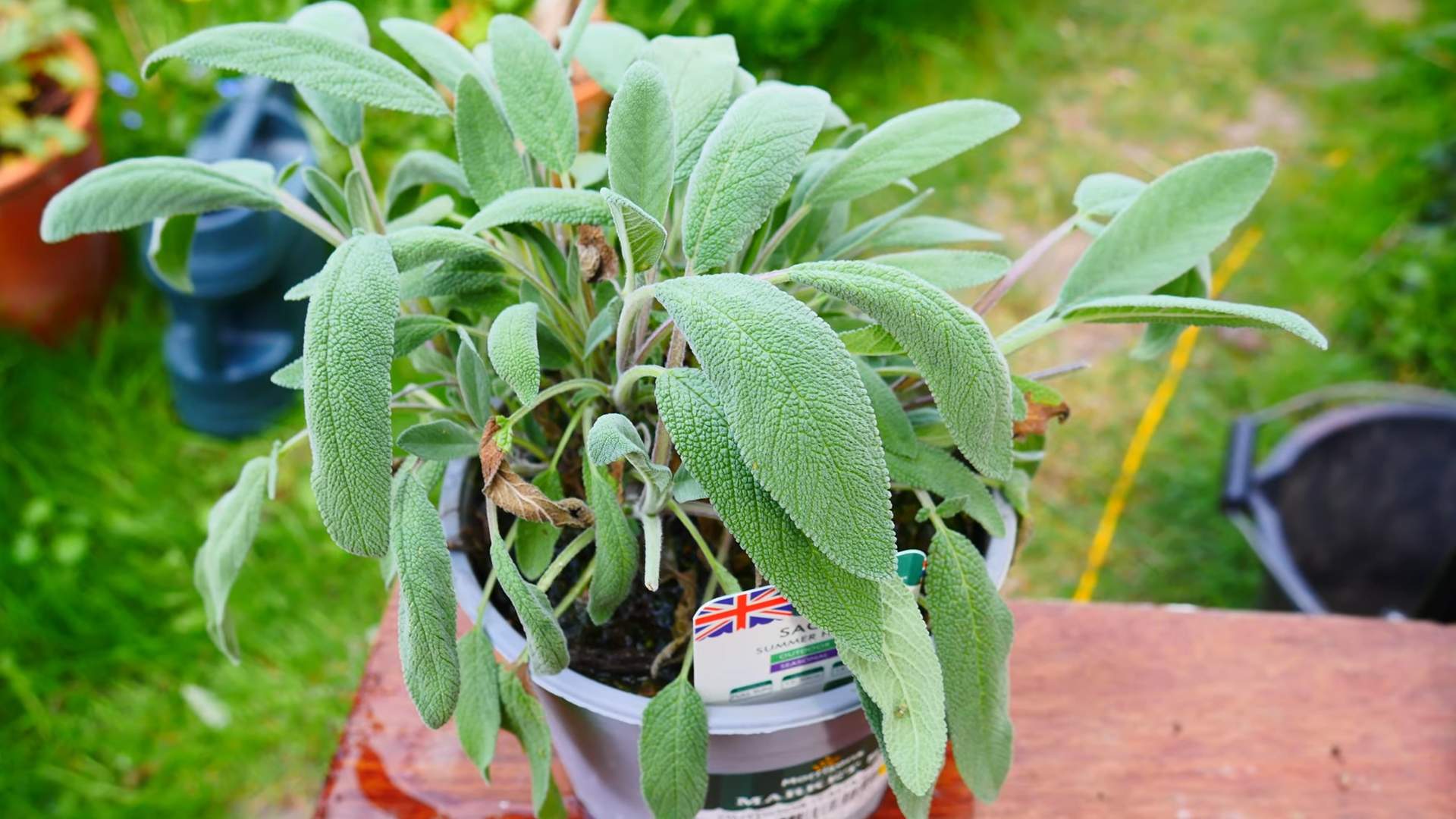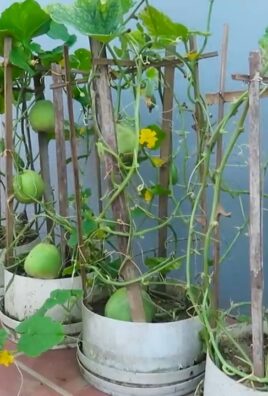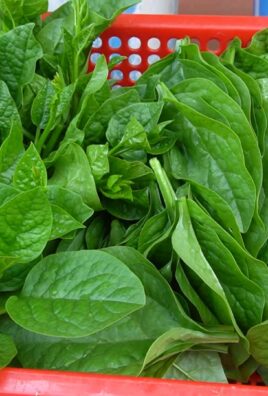Grow Sage Indoors? Absolutely! Imagine stepping into your kitchen and snipping fresh, fragrant sage leaves to elevate your culinary creations. No more last-minute grocery store runs or settling for dried herbs that lack that vibrant, earthy punch. This isn’t just a dream; it’s a reality you can easily achieve with a few simple tricks and a little DIY magic.
For centuries, sage has been revered not only for its culinary uses but also for its medicinal properties and even its symbolic significance. Ancient Romans considered sage a sacred herb, associating it with wisdom and longevity. Today, while we might not be brewing elixirs of immortality, we can certainly appreciate the herb’s versatility and the joy of cultivating it ourselves.
But why should you bother learning how to grow sage indoors? Well, for starters, it’s incredibly rewarding! There’s something deeply satisfying about nurturing a plant from a tiny seed or cutting to a thriving herb. Plus, having fresh sage readily available means you can enhance your favorite dishes with its distinctive flavor year-round, regardless of the weather outside. In this article, I’m going to share my favorite DIY tricks and hacks to help you successfully grow sage indoors, even if you don’t have a green thumb. Let’s get started!

Growing Sage Indoors: A Beginner’s Guide
Hey there, fellow plant enthusiasts! I’m so excited to share my experience with growing sage indoors. It’s easier than you might think, and having fresh sage on hand for cooking or making tea is a total game-changer. Plus, the aroma is just divine! Let’s dive in and get your indoor sage garden started.
Choosing the Right Sage Variety
First things first, not all sage varieties are created equal when it comes to indoor growing. Some get quite large and might outgrow your space quickly. Here are a few of my favorites that tend to thrive indoors:
* Common Sage (Salvia officinalis): This is the classic culinary sage, and it does well indoors with proper care. It’s relatively compact and has that wonderful, familiar flavor.
* Dwarf Sage (Salvia officinalis ‘Nana’): As the name suggests, this variety is even smaller than common sage, making it perfect for smaller spaces or container gardens.
* Tricolor Sage (Salvia officinalis ‘Tricolor’): This variety is not only delicious but also beautiful, with variegated leaves in shades of green, white, and purple. It adds a pop of color to your indoor garden.
* Purple Sage (Salvia officinalis ‘Purpurascens’): Another visually appealing option, purple sage has lovely purple-tinged leaves and a slightly milder flavor than common sage.
What You’ll Need
Before we get started, let’s gather all the necessary supplies. Having everything on hand will make the process much smoother. Here’s what I recommend:
* Sage Seeds or a Sage Plant: You can start from seeds or purchase a small sage plant from a local nursery or online retailer. Starting from seeds takes longer, but it’s a rewarding experience.
* Potting Mix: Use a well-draining potting mix specifically formulated for herbs or vegetables. Avoid using garden soil, as it can become compacted and doesn’t drain well in containers.
* Pot with Drainage Holes: Choose a pot that’s at least 6 inches in diameter and has drainage holes at the bottom. Good drainage is crucial for preventing root rot. Terra cotta pots are a great option because they allow the soil to breathe.
* Grow Lights (Optional but Recommended): While sage needs plenty of sunlight, it can be challenging to provide enough natural light indoors, especially during the winter months. Grow lights can supplement natural light and ensure your sage gets the energy it needs to thrive.
* Watering Can or Spray Bottle: For watering your sage.
* Small Shovel or Trowel: For planting.
* Fertilizer (Optional): A balanced liquid fertilizer can help boost growth, but it’s not essential.
* Pruning Shears or Scissors: For harvesting and pruning.
Planting Your Sage
Now for the fun part – planting! Whether you’re starting from seeds or transplanting a young plant, the process is pretty straightforward.
Starting from Seeds:
1. Prepare the Pot: Fill your pot with potting mix, leaving about an inch of space at the top. Gently pat down the soil to remove any air pockets.
2. Sow the Seeds: Sprinkle the sage seeds evenly over the surface of the soil. You don’t need to bury them too deep; just lightly press them into the soil.
3. Water Gently: Use a spray bottle to mist the soil thoroughly. You want to keep the soil moist but not waterlogged.
4. Cover the Pot (Optional): To create a humid environment that promotes germination, you can cover the pot with a plastic bag or a clear plastic lid. Make sure to leave some ventilation to prevent mold growth.
5. Place in a Warm Location: Place the pot in a warm location with indirect sunlight. A temperature of around 70-75°F (21-24°C) is ideal for germination.
6. Wait for Germination: Sage seeds typically germinate in 10-21 days. Once the seedlings emerge, remove the plastic covering and move the pot to a location with more sunlight.
7. Thin the Seedlings: Once the seedlings have developed a few sets of true leaves, thin them out, leaving only the strongest plants. Space them about 2-3 inches apart.
Transplanting a Sage Plant:
1. Prepare the Pot: Fill your pot with potting mix, leaving about an inch of space at the top. Dig a hole in the center of the pot that’s large enough to accommodate the root ball of your sage plant.
2. Remove the Plant from its Container: Gently squeeze the sides of the container to loosen the plant. Carefully remove the plant, being careful not to damage the roots.
3. Loosen the Roots: If the roots are tightly bound, gently loosen them with your fingers.
4. Place the Plant in the Pot: Position the plant in the hole, making sure the top of the root ball is level with the surrounding soil.
5. Fill with Soil: Fill in the remaining space around the root ball with potting mix. Gently pat down the soil to remove any air pockets.
6. Water Thoroughly: Water the plant thoroughly until water drains out of the drainage holes.
Caring for Your Indoor Sage
Once your sage is planted, it’s time to provide it with the care it needs to thrive. Here are some essential tips:
* Light: Sage needs at least 6-8 hours of sunlight per day. Place your sage plant in a sunny window that faces south or west. If you don’t have enough natural light, supplement with grow lights. I use a simple LED grow light that clips onto my shelf, and it works wonders.
* Watering: Water your sage when the top inch of soil feels dry to the touch. Avoid overwatering, as this can lead to root rot. When you water, water thoroughly until water drains out of the drainage holes. Let the excess water drain away; don’t let the pot sit in standing water.
* Temperature: Sage prefers temperatures between 60-70°F (15-21°C). Avoid placing your sage plant near drafts or sources of extreme heat or cold.
* Humidity: Sage prefers relatively low humidity levels. If the air in your home is very dry, you can increase humidity by placing a tray of water near the plant or using a humidifier.
* Fertilizing: Sage doesn’t need a lot of fertilizer, but you can give it a boost by feeding it with a balanced liquid fertilizer every 2-4 weeks during the growing season (spring and summer). Follow the instructions on the fertilizer label.
* Pruning: Pruning is essential for keeping your sage plant healthy and productive. Regularly prune your sage to remove dead or damaged leaves and to encourage bushier growth. You can also prune your sage to shape it and keep it from getting too leggy.
* Pest Control: Sage is relatively pest-resistant, but it can occasionally be affected by aphids, spider mites, or whiteflies. If you notice any pests, treat them with insecticidal soap or neem oil. I always try to use organic pest control methods whenever possible.
* Repotting: As your sage plant grows, it may eventually outgrow its pot. Repot your sage into a larger pot when the roots start to circle around the bottom of the pot.
Harvesting Your Sage
One of the best parts of growing your own sage is being able to harvest fresh leaves whenever you need them!
* When to Harvest: You can start harvesting sage leaves once the plant is established and has several sets of leaves. The best time to harvest is in the morning, after the dew has dried.
* How to Harvest: Use pruning shears or scissors to cut off stems of sage leaves. Avoid removing more than one-third of the plant at a time, as this can stress the plant.
* Using Fresh Sage: Fresh sage leaves can be used in a variety of culinary dishes, such as soups, stews, sauces, and stuffings. You can also use fresh sage to make tea.
* Drying Sage: If you have more sage than you can use fresh, you can dry it for later use. To dry sage, tie the stems together and hang them upside down in a cool, dry place. Once the leaves are completely dry, crumble them and store them in an airtight container.
Troubleshooting
Even with the best care, you might encounter some challenges when growing sage indoors. Here are a few common problems and how to address them:
* Yellowing Leaves: Yellowing leaves can be caused by overwatering, underwatering, or nutrient deficiencies. Check the soil moisture and adjust your watering accordingly. If the soil is consistently dry, water more frequently. If the soil is consistently wet, water less frequently. You can also try fertilizing your sage with a balanced liquid fertilizer.
* Leggy Growth: Leggy growth is often caused by insufficient light.

Conclusion
So, there you have it! Growing sage indoors is not only achievable, but it’s also incredibly rewarding. Imagine having fresh, aromatic sage readily available to elevate your culinary creations, infuse your home with its delightful scent, and even harness its medicinal properties, all without stepping outside your door. This DIY project is a must-try for anyone who appreciates fresh herbs, enjoys gardening, or simply wants to add a touch of green to their indoor space.
The beauty of growing sage indoors lies in its simplicity and adaptability. You don’t need a sprawling garden or extensive gardening experience to succeed. With just a few basic supplies and a little bit of patience, you can cultivate your own thriving sage plant. Think of the possibilities! You can experiment with different varieties of sage, from the classic garden sage to the vibrant purple sage or the fragrant pineapple sage. Each variety offers a unique flavor profile and visual appeal, allowing you to tailor your indoor herb garden to your specific preferences.
Beyond the culinary benefits, growing sage indoors offers a therapeutic connection to nature. Tending to your plant, watching it grow, and harvesting its leaves can be a calming and fulfilling experience. It’s a small but significant way to bring the outdoors in and create a more peaceful and inviting home environment.
Consider these variations to personalize your indoor sage growing experience:
* Hydroponic Sage: Explore growing sage hydroponically for a soilless and efficient method.
* Sage Tea Garden: Combine sage with other herbs like chamomile and mint to create a dedicated tea garden.
* Decorative Sage: Plant sage in decorative pots to add a touch of greenery and fragrance to your living space.
* Companion Planting: Grow sage alongside other herbs like rosemary and thyme, which thrive in similar conditions.
Don’t be intimidated by the prospect of growing sage indoors. It’s a forgiving plant that can tolerate a range of conditions. The key is to provide it with adequate sunlight, well-draining soil, and consistent watering. With a little bit of care and attention, you’ll be rewarded with a bountiful harvest of fresh sage.
We wholeheartedly encourage you to embark on this DIY adventure and experience the joy of growing your own sage indoors. It’s a simple, sustainable, and satisfying way to enhance your culinary creations, improve your well-being, and connect with nature.
Once you’ve successfully grown your own sage indoors, we’d love to hear about your experience! Share your tips, tricks, and photos in the comments below. Let’s create a community of indoor sage growers and inspire others to embrace the joys of homegrown herbs. What variety did you choose? What challenges did you face, and how did you overcome them? Your insights can help others succeed in their own indoor sage growing endeavors. So, get your hands dirty, nurture your sage plant, and enjoy the fruits (or rather, leaves) of your labor! Happy growing!
Frequently Asked Questions (FAQ)
What is the best location for growing sage indoors?
The ideal location for growing sage indoors is a spot that receives at least six to eight hours of direct sunlight per day. A south-facing window is typically the best option, but an east- or west-facing window can also work if it provides sufficient sunlight. If you don’t have access to a sunny window, you can supplement with grow lights. Position the grow lights about 6-12 inches above the plant and keep them on for 12-16 hours per day. Rotate the plant regularly to ensure that all sides receive adequate light. Insufficient light can lead to leggy growth and reduced flavor.
What type of soil is best for growing sage indoors?
Sage thrives in well-draining soil. A mixture of potting soil, perlite, and vermiculite is ideal. This combination provides good drainage, aeration, and moisture retention. Avoid using garden soil, as it can be too heavy and compact, leading to root rot. You can also use a commercially available herb potting mix. Ensure that the pot you use has drainage holes to prevent waterlogging. A slightly acidic to neutral pH (around 6.0 to 7.0) is optimal for sage growth.
How often should I water my indoor sage plant?
Water your sage plant when the top inch of soil feels dry to the touch. Avoid overwatering, as this can lead to root rot. Water thoroughly until excess water drains out of the drainage holes. Allow the soil to dry out slightly between waterings. During the winter months, when the plant is not actively growing, you may need to water less frequently. Check the soil moisture regularly and adjust your watering schedule accordingly.
How do I fertilize my indoor sage plant?
Sage is not a heavy feeder, so it doesn’t require frequent fertilization. Fertilize your sage plant every 4-6 weeks during the growing season (spring and summer) with a balanced liquid fertilizer diluted to half strength. Avoid over-fertilizing, as this can lead to leggy growth and reduced flavor. You can also use a slow-release fertilizer at the beginning of the growing season. Do not fertilize during the winter months when the plant is dormant.
How do I prune my indoor sage plant?
Pruning is essential for maintaining the shape and health of your sage plant. Prune regularly to encourage bushier growth and prevent the plant from becoming leggy. Pinch off the tips of the stems to promote branching. Remove any dead or yellowing leaves. You can also prune back the plant by about one-third in the spring to encourage new growth. Use clean, sharp pruning shears to avoid damaging the plant.
How do I harvest sage leaves from my indoor plant?
You can start harvesting sage leaves once the plant is established and has several sets of leaves. Harvest leaves in the morning, after the dew has dried. Cut the stems just above a leaf node to encourage new growth. Avoid harvesting more than one-third of the plant at a time. You can use the fresh sage leaves immediately or dry them for later use. To dry sage leaves, hang them upside down in a cool, dry, and well-ventilated place.
What are some common problems when growing sage indoors?
Some common problems when growing sage indoors include:
* Root rot: Caused by overwatering. Ensure that the soil is well-draining and avoid overwatering.
* Powdery mildew: A fungal disease that appears as a white powdery coating on the leaves. Improve air circulation and treat with a fungicide if necessary.
* Aphids: Small, sap-sucking insects that can infest sage plants. Wash them off with a strong stream of water or treat with insecticidal soap.
* Spider mites: Tiny pests that can cause yellowing and stippling of the leaves. Increase humidity and treat with miticide if necessary.
Regularly inspect your plant for signs of pests or diseases and take action promptly to prevent them from spreading.
Can I grow sage from cuttings indoors?
Yes, you can easily propagate sage from cuttings indoors. Take a 4-6 inch cutting from a healthy stem, removing the lower leaves. Dip the cut end in rooting hormone and plant it in a pot filled with moist potting mix. Cover the pot with a plastic bag to create a humid environment. Keep the soil moist and place the cutting in a warm, bright location. Roots should develop in a few weeks. Once the cutting has rooted, remove the plastic bag and transplant it into a larger pot.
Is growing sage indoors worth it?
Absolutely! Growing sage indoors offers numerous benefits. You’ll have a constant supply of fresh, flavorful sage for cooking, teas, and medicinal purposes. It’s also a sustainable and cost-effective way to enjoy fresh herbs. Plus, the act of gardening can be therapeutic and rewarding. The aromatic scent of sage can also enhance your indoor environment. So, if you’re looking for a simple and satisfying DIY project, growing sage indoors is definitely worth a try.




Leave a Comment